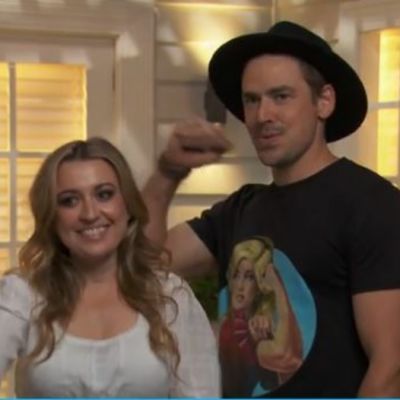Why basements are the new must-have space to complete your home
Basements are the new crown jewels of the COVID-19 housing industry; underground gems that can offer extra space for a whole range of uses, from home offices to gyms, wine cellars to theatres.
And in the pandemic era where so many of us are spending much more time at home, they’ve never been valued so highly.
“People love the kind of basement spaces they can make great use of,” says Murray Wood, associate director of McGrath Projects NSW, who’s about to launch a set of new homes – titled Mansions – on the market in Pyrmont with basements from 90 square metres to 200 square metres.
“We’re calling them ‘utility spaces’, and they add a lot of value to the home, with people using them – besides garaging – for workshops, music or painting studios, movie rooms, simulated golf driving ranges … and one buyer putting in a 3000-bottle winery. The potential for that extra space is endless.”

Home owners across Australia are proving to be eager converts to a trend that’s already well-established in the US and UK of going underground to free up more space. Extending up in many cases might not be permitted by local councils – or neighbours – and spreading outwards could also not be allowed or would chew up valuable garden space.
So, digging down is the new fashion, with the sites of older, established houses being excavated and the buildings underpinned, numerous renovations also including work underground, and many new homes are being built with basements.
View The Block 2021 properties for sale
- House 1, Ronnie and Georgia: 2 Bronte Court, Hampton
- House 2, Mitch and Mark: 4 Bronte Court, Hampton
- House 3, Tanya and Vito: 8 Bronte Court, Hampton
- House 4, Josh and Luke: 10 Bronte Court, Hampton
- House 5, Kirsty and Jesse: 1 Bronte Court, Hampton
With house prices surging, many want to make the most of every square metre of space, and lockdowns keeping us at home much more, basements are back in the limelight.
Even TV show The Block is now having teams renovate basements for the first time in its history, shining another light on spaces traditionally designated for cars, bikes, surfboards, and junk storage.
“When you can’t make a house much bigger on the land you have, it’s a very good idea to go subterranean,” says Melbourne agent Marcus Chiminello of Marshall White. “You get better efficiencies on a block by doing that, and a basement really does add a lot of value to a home.

“We’re asking a lot more of our homes now through so many lockdowns; they’re no longer places just to sleep and eat.”
One spectacular home he was selling, pre-COVID, at Toorak’s 29 Balmerino Avenue had a whole entertainment zone on its lower level with a home theatre, bar, gym, music room, wine storage cellar and a six-car garage, all lit via a lightwell in the courtyard. It was listed for $12 million to $13.2 million.
When the owner started looking around for homes he could move into; however, he realised what an asset his basement was and withdrew his home from sale. “Now, since the lockdowns, he’s been enjoying it even more,” Chiminello says.
It was the same story for a Sydney home being sold with a huge basement at 26 Ocean Street, Woollahra, with a second kitchenette, bathroom and polished concrete floors. It was billed as being perfect for a gym, teenagers’ retreat or an entertainment area. It was listed for $3.295 million.

“Then the owner changed his mind and decided to keep it after finding there was little else like that around,” says Dominic D’Ettorre of D’Ettorre Real Estate. “He realised how unique having all that space was. This year, we had an offer for it of $4.3 million, but he still refuses to sell.
“Basements are great for supplying valuable extra space for the home, especially if they’re high enough to stand up in. And you see some amazing things done with that space now, like in-ground pools, gyms and even, most memorably, with one terrace in Surry Hills I looked at, a bondage room with whips and chains. The owner asked me if he should leave it like that when he was selling. I said, ‘Definitely not!’”
There are limits, of course, to what can be done with basements. As they generally don’t have natural light or windows, they’re not habitable spaces and can’t be turned into bedrooms or granny flats. Some councils also permit them as long as they don’t affect the floor-space ratio.
“People get around that by calling them storage areas,” says Shaun Thomas, the director of Sydney prestige residential at valuers Herron Todd White. “But they do add a lot of value, sometimes an additional $1 million or $2 million, depending on the size of the space, the configuration, the fit-out and the location, and we often see them in prestige properties.

“They are becoming more common now, particularly in the newer builds, and we’re seeing a lot more plans for them. That’s easier than renovating existing properties to include them as excavation work can be quite expensive.”
In Sydney, they’re most commonly seen in the eastern suburbs, the lower north shore, the inner west and inner-city, where above-ground space is at a premium. In Melbourne, they tend to happen mostly in blue-chip areas like Toorak and Kew, Brighton and South Yarra. Elsewhere in the country, they occur less often as pressures on space aren’t so intense, although they have been seen in Brisbane’s Ascot and New Farm.
In London, the underground movement took off in 2008, and in the following four years, the borough of Kensington alone received more than 400 planning applications for the modern-day bunkers. Since then, “iceberg architecture” has spread across all the trophy areas of the city where residents want more space but don’t want to leave. In New York and LA, in the densest blue-chip areas, the trend started around 2010.
“It’s taking off a lot more here in the past 15 to 18 months because of COVID,” said Jellis Craig Stonnington agent John Morrisby, who listed a grand five-bedroom home at 66 Ardrie Road, Malvern East, with a vast underground retreat of a home theatre, 800-bottle wine room, games room and home gym, which sold last year for $4.07 million. “People are really looking for more room.”
We recommend
States
Capital Cities
Capital Cities - Rentals
Popular Areas
Allhomes
More
- © 2025, CoStar Group Inc.










